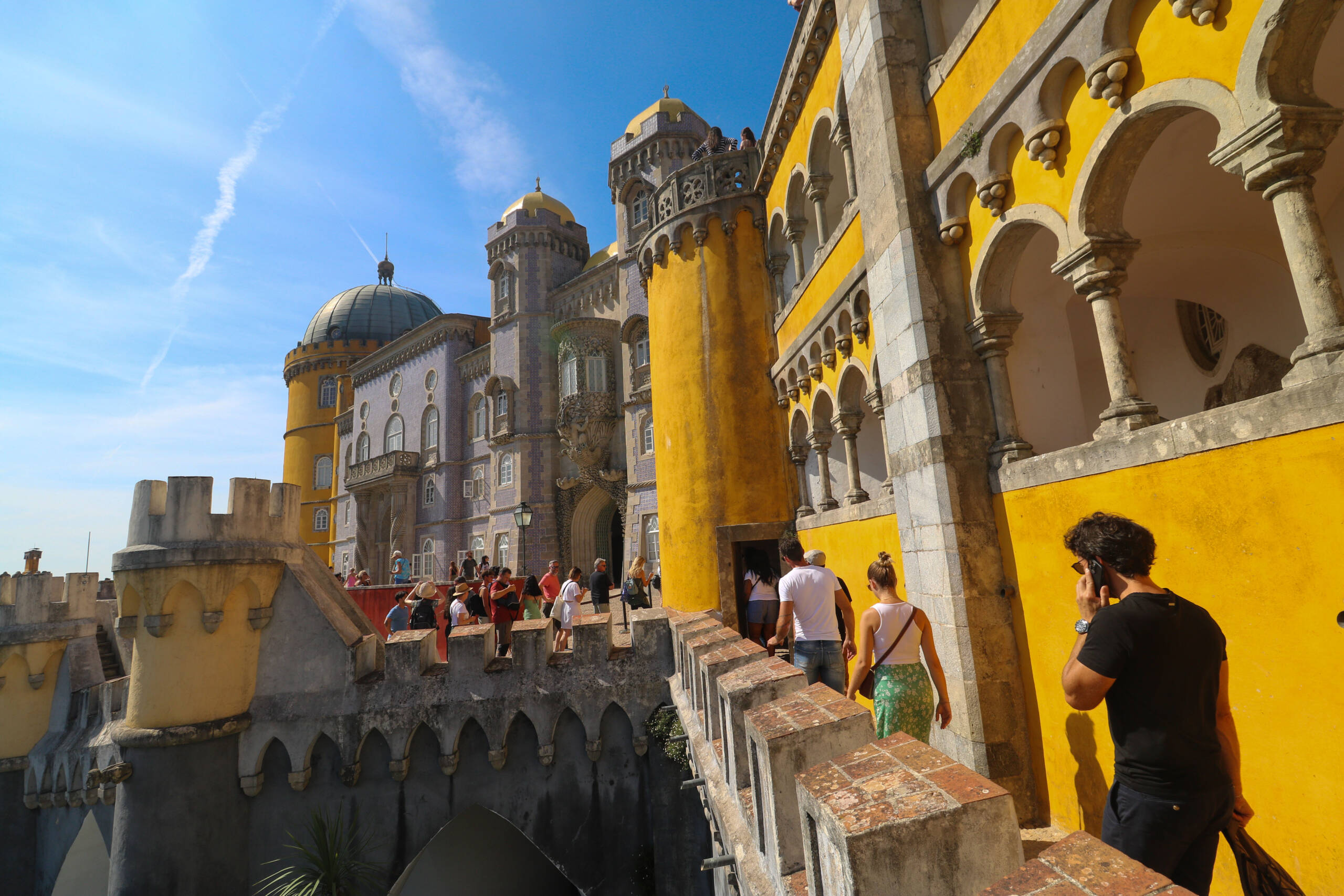There are few places in Europe that feel as surreal and magical as Sintra’s Pena Palace, perched high above the rolling green hills like a dream painted in bright yellow and lilac. Standing on its terraces, you feel swept into a fairytale that refuses to obey a single style. Moorish arches meet Gothic details, Romantic turrets rise next to Renaissance windows, and the entire structure bursts with bold colors that look as though they were plucked straight from an artist’s imagination. It’s theatrical, unapologetically whimsical, and almost overwhelming in the way it plays with history and fantasy at the same time.
On the day I visited, the sun was relentless and the sky stretched clear and blue, which made the palace’s yellow walls practically glow. Crowds of travelers were funneled through narrow walkways, brushing past each other while craning their necks for photos. I found myself caught in a slow procession along the battlements, with one side opening to sweeping views of forested hills tumbling down to the coast, and the other side pressing close to the palace’s candy-colored walls. It’s the sort of place where you’re never quite sure whether to look outward at the views of Portugal or inward at the details etched into stone and tile.

The palace itself feels alive with contradictions. One façade is covered in blue-and-white azulejos, glittering in the sunlight like polished jewels, while another side is painted in fiery ochre, almost Mediterranean in its warmth. Gothic statues stare down from above doorways, while playful arches cast striped shadows across the ground. It’s as if every century of Portuguese architecture had been invited to the same party and they all showed up, determined to outshine the others. Oddly enough, it works—perhaps because Sintra itself seems to bend the rules of ordinary logic.
Walking through, I couldn’t help noticing the mix of tourists around me: couples holding hands, families trying to herd their kids along the narrow walls, and solo travelers pausing every few steps to take selfies with the domes and towers. There was a man in front of me on the phone, completely absorbed in his conversation, as though he wasn’t surrounded by one of the most fantastical palaces in the world. I smiled at the contrast—it’s funny how ordinary life insists on following us even into fairytale settings.
But then you turn a corner, step into a shaded arch, and suddenly silence falls. The palace whispers of kings and queens who once dreamed here, of Romantic poets who found inspiration in its terraces, of centuries when Sintra was considered a retreat from Lisbon’s noise and heat. It’s hard not to feel, even for a fleeting moment, that you’ve stepped sideways into another realm. And when the sunlight strikes the domes just right, the yellow walls gleam like gold against the sky, as if the whole palace is about to lift off and float above the hills.
Traveling to Sintra is a reminder that sometimes the most extraordinary destinations don’t just show you history—they let you walk inside a dream. Pena Palace doesn’t ask to be taken seriously; it asks you to be swept away, to abandon logic for a while, and to surrender to color, whimsy, and wonder. And honestly, in our practical and rushed world, that feels like the greatest luxury of all.
Leave a Reply